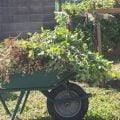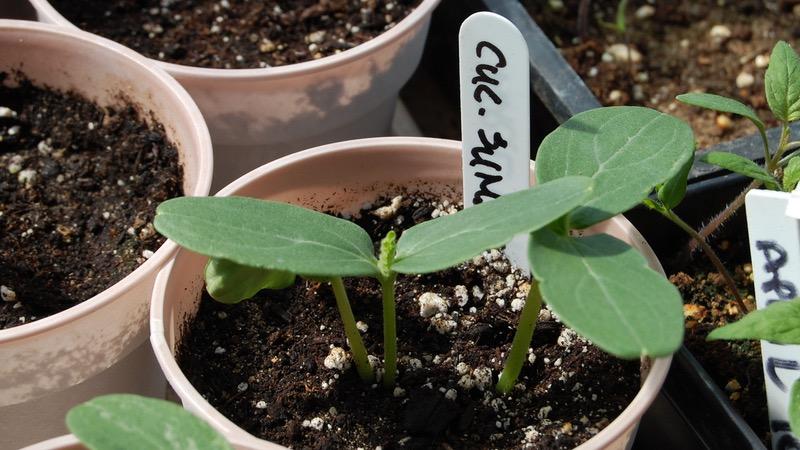By Judith Wright
 Tucked into a tiny space between a penthouse wall and a roof edge spreads a mountainscape of container plants. Every inch of every surface is crowded with climbing, flowering, escaping gardenage—and it’s all about food. Potatoes, tomatoes, borage, lettuce, rhubarb, cabbage, garlic, chard and more. “It used to be an elegant place for an evening dinner party,” says Dawna Rose, a Saskatoon pharmacist, artist and experimenter. “Now we have to shove stuff aside just to sit down.” Her sole purpose here for the last three summers has been to produce as much food as possible in 12 square metres (129 square feet). Ever since she learned about the hundred-mile diet, urban farming has become a serious hobby of hers.
Tucked into a tiny space between a penthouse wall and a roof edge spreads a mountainscape of container plants. Every inch of every surface is crowded with climbing, flowering, escaping gardenage—and it’s all about food. Potatoes, tomatoes, borage, lettuce, rhubarb, cabbage, garlic, chard and more. “It used to be an elegant place for an evening dinner party,” says Dawna Rose, a Saskatoon pharmacist, artist and experimenter. “Now we have to shove stuff aside just to sit down.” Her sole purpose here for the last three summers has been to produce as much food as possible in 12 square metres (129 square feet). Ever since she learned about the hundred-mile diet, urban farming has become a serious hobby of hers.
“I just wanted to know how much food I could make,” she says. “And every year, I get smarter.” The green-roof industry is still young in Canada, and although the benefits of urban green spaces are undeniable, most buildings aren’t built to support soil and water on the roof. There are a legion of challenges with rooftop gardening: heat, aridity, wind and weight. Purpose-built rooftop farms and greenhouses can take advantage of a building’s energy and insulate the buildings themselves. But in the meantime, for “less-than-purpose-built” rooftops, sky-side gardening needs to be tackled on a smaller scale, which is where innovators like Dawna come in.

Dawna’s biggest challenge has been water: how to direct, collect, and redistribute the weight. She aspires one day to commandeer the remainder of the apartment’s rooftop, but water drives all her plans. She points to the rain barrel positioned to catch the runoff from a piece of corrugated roofing. Slender planks traverse the overhead space, slung with pots that are planted top and bottom in layers. The drainage from the top tier waters the understorey. Double dipping, she calls it. “We need to figure out how to capture and use water more efficiently,” she reasons. “With all these flat-roofed apartments downtown, we could feed a city!”

Water Barrel
Eating local is, of course, as much about taste is it is about keeping a sustainable food source. “Plus, living seasonally is a philosophy,” she points out. “Use what you have. Our grandparents made wonderful food from whatever was seasonably available. Unfortunately, we’ve gone the other direction—the recipe directs the way we shop and the ingredients we use, instead of what’s at hand directing the recipe. We need to rethink that.” By knitting the plants together to take the best advantage of the sun and rain, she has managed to extend the growing season well into October.

It hasn’t been easy, however. Both the heat in July and August and the prairie wind can be ferocious. Year-round, she leaves up sections of wooden lattice covered with the dead vines of previous seasons, which helps slow down roof-top-level gales. The birds used the dead vines as paths to hunt insects and for homes in winter. “Why are we always cleaning up after things?” she asks. “Nature doesn’t do that.”
Up here, the alchemy of the garden lies fully exposed. Dawna’s sense of curiosity, her love of experimentation and her appreciation of nature’s variety and abundance is prominent. Each year, she experiments with a different planting theme. One year, her rooftop was devoted to flowers that attracted bees; another year, it was for whatever anyone had too much of and gave away. Self-starters are her favorites. She points proudly to several pots of “volunteer” morning glories—rescued as seedlings from cracks in the roof. “Why would I grow the same marigolds, year after year?” she asks.

In Dawna’s garden, every possible kind of container has been pressed into service, from the lowly shopping bag to the plastic wading pool. As to what grows best in what type of container, she’s never been interested in specialized container plants. She prefers the “that-looks-interesting” approach to plant selection, and learns about the plant as she goes along.
Her favourite container plant is the humble potato. She roots around in a pot and plucks one out. “They love it when you do that,” she says. “It makes them produce more. I love how they look, and how they flower and taste. Who couldn’t love a potato?”













